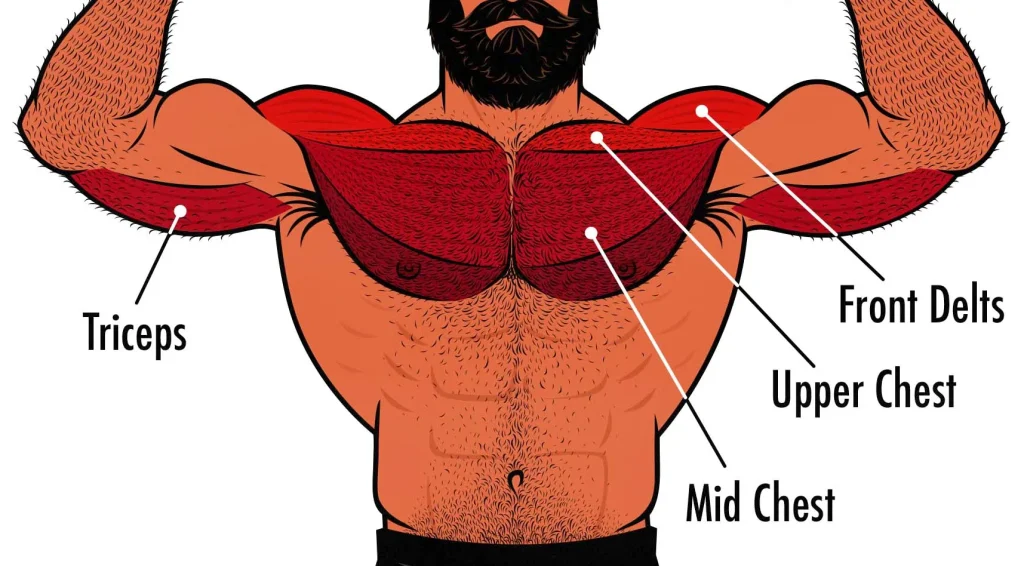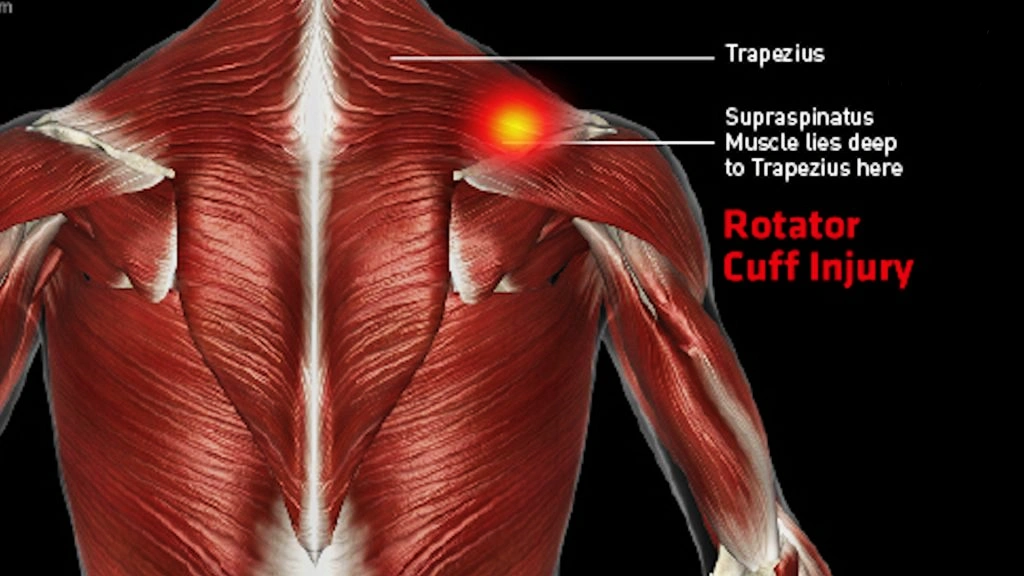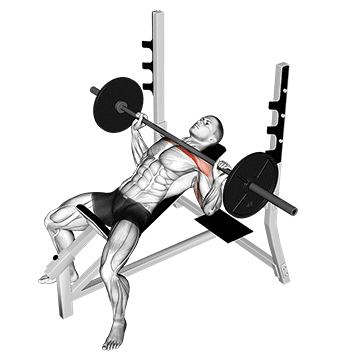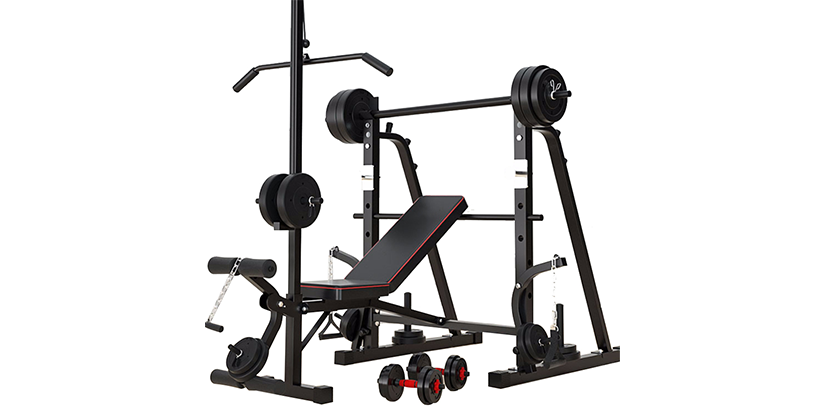Incline bench shoulder pain——Yeah, sounds familiar, right?
You finish a solid set. Everything feels good. Then you hop on the incline bench — and out of nowhere, your shoulder starts acting up. Not sharp pain, just that weird, dull ache. Annoying. Unclear. Comes and goes.
Maybe you blame your form. Maybe it’s just an off day.
But if it keeps happening? That’s a sign.
You’re not the only one, by the way. Tons of lifters deal with this.
Makes no sense, right? Chest press → shoulder pain.
Let’s look at why.
What Is Incline Bench Press?
Incline bench press is a classic upper chest builder.
You set the bench at an angle — usually 30 to 45 degrees — lean back, and press. That’s it. Simple move, big payoff… when done right.

🔍 Target Muscles
- Upper chest (clavicular pecs) — this is the star of the show. The incline angle hits this area harder than flat bench ever will.
- Front delts (shoulders) — get heavily involved. Sometimes too involved, especially if your form is off.
- Triceps — still active, but more as support players here.
👉If you feel your shoulders working more than your chest, that’s already a red flag.
🔍 Incline vs. Flat Bench — Quick Breakdown
| Feature | Incline Bench Press | Flat Bench Press |
|---|---|---|
| Bench Angle | 30–45° incline | 0° flat |
| Main Muscle Target | Upper chest + front delts | Mid/entire chest |
| Shoulder Stress | Higher | Moderate |
| Range of Motion | Slightly shorter | Slightly longer |
| Risk of Pain | More common (esp. in shoulders) | Less common |
So yeah, incline bench is great — but it’s also trickier.
You’re not just changing the angle. You’re changing how your body moves… and how much your shoulders have to do.
That’s why things can go wrong — fast.
Common Causes of Incline Bench Shoulder Pain
Incline bench shoulder pain doesn’t come out of nowhere.
Real cause? Usually more than one.
Here are the most common “hidden killers” 👇

1️⃣ Bench angle too high
What angle are you setting your bench to?
A lot of people go straight to 60 degrees — or even higher. Looks like a chest workout, but honestly, you’re already doing a seated shoulder press.
Here’s the problem: the higher the angle, the more stress on your shoulders.
Your chest doesn’t even get to work — your shoulders give up first. Especially if they’re already a bit sensitive.
2️⃣ Scapula doesn’t move / not stable
Most people miss this. You press your back against the bench and feel “stable”? But actually, your scapula isn’t moving when it should, or it’s unstable when it shouldn’t be.
And that leads to:
- Shoulders getting stuck
- Pressure piling up on the joint
- One heavy rep = instant impingement
3️⃣ Elbows flaring / Bar too high
Where’s your bar landing? Below the collarbone — or right on your neck?
Are your elbows dropping naturally — or flaring out to the sides?
If it’s the second one, congrats — your shoulders are now in an awkward, stressed-out position.
That setup twists your shoulders under load instead of letting your chest do the work.
4️⃣ Jumping to heavy weight
Did you even warm up before loading the plates?
Incline bench stresses your shoulders more than you think. One bad rep — unstable form, poor control — and your shoulders are forced to take over.
Then comes the familiar shoulder pain.
Not a snap — but a slow build-up.
These little things might go unnoticed during training.
But when your shoulder finally acts up, you’ll realize they’ve been building up all along.
How to Prevent Incline Bench Shoulder Pain
Now that you know what’s causing the pain, let’s talk about how to stop it.

1️⃣ Keep the angle between 30°–45°
This one’s huge.
Set the bench too high, and you’re not training chest anymore — you’re loading your shoulders.
👉30 to 45 degrees is the sweet spot.
Still hits upper chest. Doesn’t crush your joints.
If your gym has fixed benches, choose the one closer to 30°.
2️⃣ Learn to control your scapula
Don’t just pin your back and hope for the best.
Your scapula should move slightly as you press — it’s part of the motion.
But it also needs to stay stable enough to support the lift.
Try this:
- Pull your shoulder blades down and back
- Keep them engaged — but not frozen
- Think “chest up, shoulders back,” all the way through
👉 If your reps feel stuck or off-track — fix your scapula first.
3️⃣ Check your setup — grip, elbow, bar path
Small details. Big impact.
- Elbows too wide? More shoulder torque.
- Bar too high on the chest? More strain.
- Grip too wide or too narrow? Same story.
Here’s the basic checklist:
- Elbows at ~45°
Bar lowers to upper chest
Grip lets you stay controlled — not stretched or pinched
Wrists stacked above elbows
4️⃣ Warm up — properly
Sounds boring. Saves shoulders.
You can’t just hop on the bench cold and expect your joints to keep up.
Warm-ups increase blood flow, prep your stabilizers, and fire up the right muscles.
Try this warm-up flow:
- Arm circles / band pull-aparts (30 sec)
- Light incline press with dumbbells (2–3 sets)
- Slow tempo reps with the bar
5️⃣ Drop the ego. Lift smart.
This one stings a bit, but it’s real.
Incline bench is not a powerlifting event.
You’re here to build muscle, not impress strangers.
Heavy weight + bad form = pain.
Every time.
Lower the load. Dial in your technique.
Training Modifications That Help
Shoulder still acting up? Doesn’t mean you have to quit chest day.
There are smarter ways to train — ways that take stress off your shoulder without killing your gains.
Let’s look at some solid adjustments you can make right now👇
1️⃣ Use Dumbbells Instead of a Barbell

This one’s a game-changer.
Dumbbells let your arms move freely, so your shoulders aren’t locked into a fixed bar path.
You can adjust your grip, range, and angle — all of which reduce pressure on the joint.
2️⃣ Try a Neutral Grip
Instead of palms facing forward, turn them in — like a hammer grip.
This opens up the shoulder joint, puts less strain on the front delt, and feels more natural for a lot of people.
3️⃣ Lower the Incline or Go Flat
Sometimes incline just doesn’t work — and that’s okay.
You can still train upper chest using a slight incline (15–30°) or even flat bench with a slight arch.
You’re still getting chest activation — just not at the cost of your shoulder.
👉 Your body > the angle. Always.
4️⃣ Replace with Safer Alternatives
If incline pressing hurts every time, sub it out.
Here are some great chest-building swaps:
- Landmine press — great for upper chest + shoulder-friendly
- Low-to-high cable flys — serious upper chest burn, zero joint stress
- Machine incline press — more control, adjustable angles
- Push-ups with feet elevated — underrated and super joint-safe
5️⃣ Adjust Volume & Intensity
You might not need to ditch the movement — just tweak how you train it.
- Fewer sets
- Lighter weight
- Slower tempo
- Shorter range if full ROM hurts
Recovery and Treatment Tips
Your shoulder’s already hurting — now what?
Good news: you don’t have to quit.
But you do need to change how you train.
Here’s what helps 👇
1️⃣ Stop the stuff that hurts
If incline bench press is causing pain, cut it — for now.
This isn’t weakness. It’s smart.
Sub in safer movements while things calm down.
2️⃣ Ice — only in the early phase
If the pain’s fresh (first 48 hours), ice helps reduce inflammation.
15–20 minutes, 2–3x a day. That’s enough.
Then switch to heat or light movement.
3️⃣ Start moving again — gently
Total rest stiffens things up.
Use light, pain-free motion to boost blood flow:
- Arm swings
- Wall slides
- Band pull-aparts
- Scapula push-ups
4️⃣ Strengthen the small muscles
Healthy shoulders need support from your rotator cuff and scapular stabilizers.
Train 2–3x/week:
- Band external rotations
- Face pulls
- YTWLs
- Serratus wall slides
- T-spine mobility drills
Not flashy — but it works.
5️⃣ Still hurting after 2 weeks? Get checked
See a physio who understands lifting.
They’ll find what you’re missing.
Incline bench shoulder pain doesn’t just show up overnight.
It builds — one bad angle, one rushed rep, one skipped warm-up at a time.
Catch it early. Adjust your training.
And your shoulder won’t make you regret it later.

Hi, I’m Alex Carter, part of the editorial team at Leadman Fitness. We specialize in crafting premium custom racks, cable machines, functional trainers, and strength accessories for home and commercial gyms. With a background in competitive powerlifting and gym design consulting, I’ve spent years testing gear under heavy loads and optimizing layouts for efficiency.
I focus on translating real-world user frustrations—like space limitations, budget constraints, or durability needs—into actionable solutions. By collaborating directly with our engineers and facility owners, I ensure our custom equipment evolves to solve the unspoken challenges lifters face daily. What I share isn’t textbook advice; it’s battle-tested insight from racks I’ve welded, cables I’ve replaced, and gym floors I’ve trained on.
